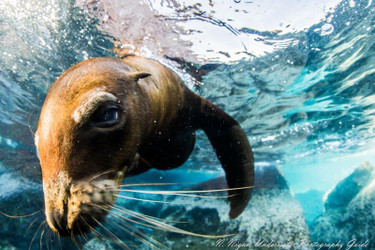La Paz Dive Report with the Sony A7R IV and Nikon Z6
November 12th, 2019
Baja California is a wonderous land of extremes. Giant cardon cactus dot a desert landscape surrounded by the azure waters of the Sea of Cortez. Pelicans and cormorants scan the skies for shimmering sardines, and playful sea lions blow bubbles from below. Whale sharks congregate to feed on the abundant plankton, and mobula rays perform acrobatic stunts under tropical sun. It’s an ocean-lovers paradise and an obvious choice for underwater photographers. Scuba diving in Mexico is incredible. For these reasons, we run annual underwater photography workshops to La Paz, Mexico. This year’s trip was led by Bluewater Photo and Travel Owner Scott Gietler and Nirupam Nigam, the Editor-in-Chief of the Underwater Photography Guide.
Our October, 2019 workshop was as good as it gets – packed with sea lions, whale sharks, hammerheads, mobula rays, top notch dive guides, and 23 enthusiastic guests! The timing of the workshop couldn’t have been better. Despite rain the week before we arrived, the weather for the whole trip was sunny, dry, warm, and beautiful. Ocean conditions were generally great with a little wind limiting sites on a few days. Visibility ranged from about 50 to 130 ft, but most importantly, the sea lions were out and ready to play!
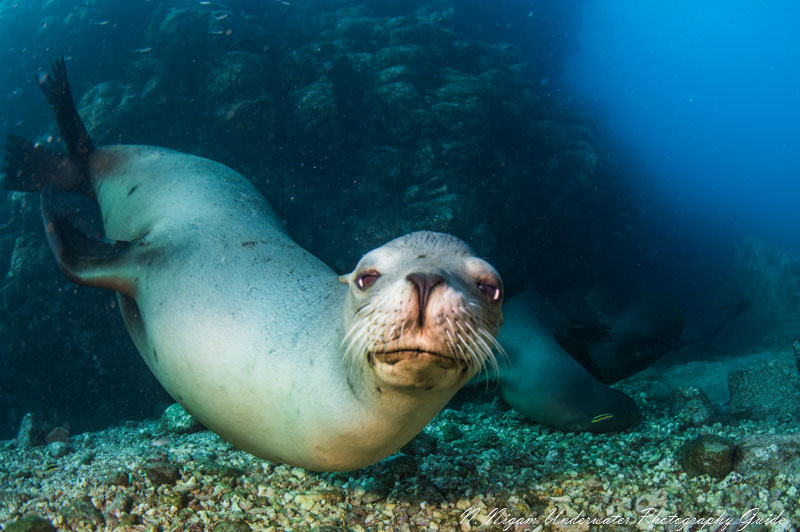
A sea lion at Los Islotes, La Paz, Mexico photographed with the Nikon Z6, Nikon 8-15mm fisheye lens, Isotta Z6/Z7 underwater housing, dual Sea & Sea YS-D2J strobes. 1/200, f/7.1, ISO 200
The Sea Lion of Los Islotes
La Paz boasts one of the best spots in the world for Sea Lion diving – Los Islotes. Los Islotes is a small island an hour’s boat ride from La Paz with dramatic topography and a large sea lion colony. The visibility is usually crystal clear and large schools of sardines and other fish swirl around the rocks forming the base of the island. The trick to sea lion photography is to stay shallow in the water column and play with the sea lions when they play with you! Many of the pups and young adults would blow bubbles and play tug-of-war with sticks. Our guests love these dives so much that we went back three times.
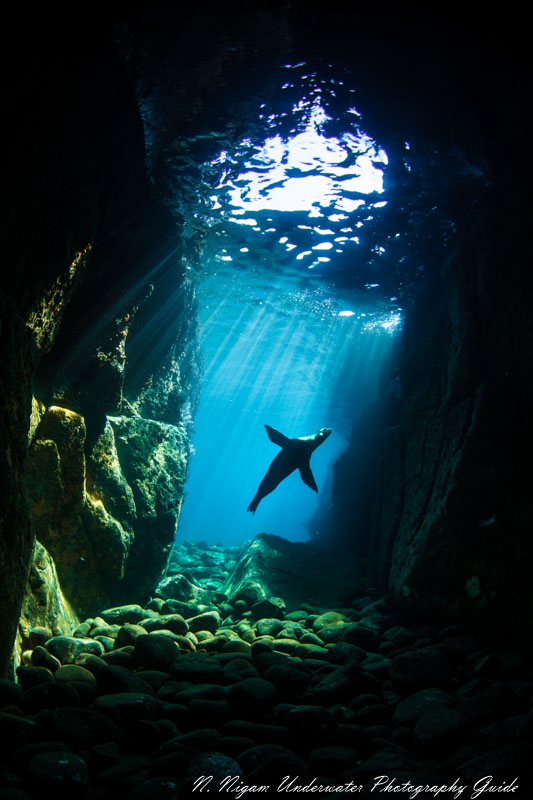
A sea lion darts in and out of a sea cave at Los Islotes as the sun shines overhead. Photographed with the Sony A7R IV, Canon 8-15mm fisheye w/ metabones adapter, Ikelite A7R IV housing, and dual Ikelite DS 161 strobes. 1/250, ISO 100, f/14
Reefs, Rays, and More!
The reefs off of La Paz are some of the best diving the Sea of Cortez has to offer. One of our favorite sites was El Bajo – a submarine sea mount with dramatic structure, coral, and lots of hammerhead sharks. One guest saw over 50! Another highlight of the trip was snorkeling with the whale sharks that congregate in La Paz bay. At one point, some of our guests found themselves in the middle of two sharks. The mobula ray night dive was our final dive. It was a special experience to watch the fast and agile mobulas zip around divers as the milky way shown bright overhead.
A pufferfish at El Bajo sea mount eyes his reflection in the dome port as he tries to protect his female from the incoming photographer. Photographed with the Sony A7R IV, Canon 8-15mm fisheye w/ metabones adapter, Ikelite A7R IV housing, and dual Ikelite DS 161 strobes. 1/200, ISO 100, f/13
Underwater Photo Gear
During the workshop Scott and Nirupam were lucky enough to dive with some the latest and greatest underwater photo gear on the market. This included the Sony’s latest full-frame mirrorless camera, the Sony A7R IV, and Nikon’s first full-frame mirrorless camera, the Nikon Z6. We used an Ikelite A7R IV underwater housing with the Sony A7R IV and an Isotta Z6/Z7 housing with the Nikon Z6.
Sony A7R IV Underwater Performance
We were extremely impressed with the Sony A7R IV’s performance in La Paz – it was a big step up from A7R III. La Paz’s sea lions are the ultimate autofocus test for any camera. They are fast, unpredictable, and lack contrast. If you can capture one in-focus shot in ten of a frisky sea lion you’re lucky. The A7R IV captured about 1 in 4 – which is saying something! Autofocus has often been the limiting factor when it came to underwater performance of Sony full-frame mirrorless cameras. This wasn’t the case with the A7R IV. The A7R IV’s autofocus capability has been improved far beyond what the A7R III was when it came out. The autofocus tracking is particularly impressive, especially when used in conjunction with the Sony 16-35mm rectilinear wide lens. The focus stuck to the subject despite its speed. The autofocus tracking with the Sony A7R IV is the best in its class.
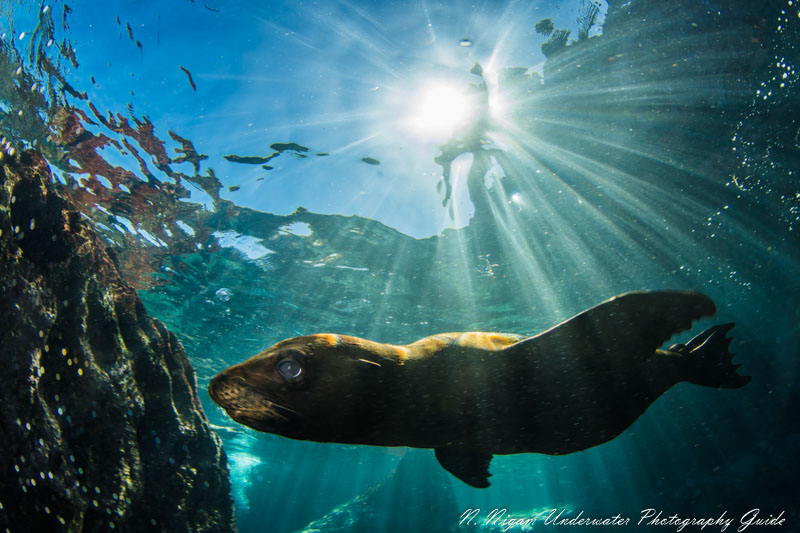
This photo could only be captured with the Sony A7R IV's AF tracking and excellent dynamic range. Photographed with the Sony A7R IV, Canon 8-15mm fisheye w/ metabones adapter, Ikelite A7R IV housing, and dual Ikelite DS 161 strobes. 1/250, ISO 200, f/14
The main attraction when it comes to the Sony A7R IV is its 61 megapixels of resolution – the highest of any full-frame camera on the market! We put the A7R IV to the test by taking it on three macro dives where we were able to capture impressive amounts of details in tiny damselfish, blennies, turtle skin, and more. Shooting the A7R IV with the Sony 90mm lens is like bringing a microscope underwater. You can crop to your heart’s desire and still have a useable, printable image!
One might expect that the camera’s dynamic range would be affected by the sheer number of megapixels. This wasn’t the case. We were able to capture beautiful sunbursts, sunrays, and sea lion silhouettes. Often they looked nicer and more detailed than the images captured with the Nikon Z6 in the same lighting conditions, but this opinion is rather subjective, both are great cameras.
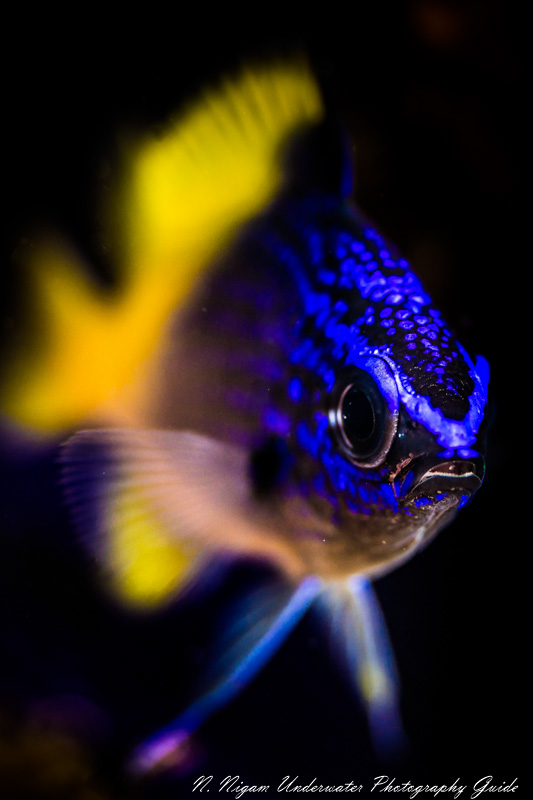
With 61 megapixels of resolution, the Sony A7R IV is capable of spectacular fish portraits. Photographed with the Sony A7R IV, Sony 90mm f/2.8 macro lens, Ikelite A7R IV housing, and dual Ikelite DS 161 strobes. 1/200, ISO 100, f/3.2
The Ikelite housing was really a great fit for the Sony A7R IV, with a plethora of accessories designed to enhance our shooting experience. It’s design and polycarbonate construction make it corrosion resistant, and its underwater buoyancy was very light for a camera and housing of this class. We used a large dome and trim rail when shooting sea lions, and we found the trim to be ideal for wide angle shooting situations. The trim rail balances the extra buoyancy of a large dome port, making it a great option for those taking video or stills of wide angle scenes and over undershots. We were able to hold the camera perfectly still as the sea lions darted around and splashed around us. Our favorite accessory was the Sony to Ikelite TTL converter that we used with the Ikelite DS 161 strobes. The TTL exposure was very accurate and I had no concern over the strobes miscalculating the exposure. This was really useful when shooting sea lions and reefscapes in current. It was also really useful when shooting macro photos – especially of the small, quick damselfish.
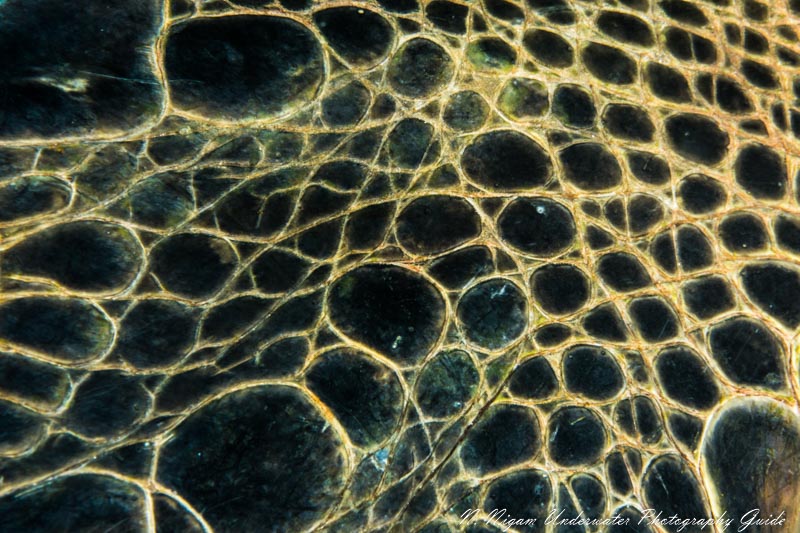
Sea turtle skin patterns. Photographed with the Sony A7R IV, Sony 90mm f/2.8 macro lens, Ikelite A7R IV housing, and dual Ikelite DS 161 strobes. 1/200, ISO 100, f/18
Nikon Z6 Underwater Performance
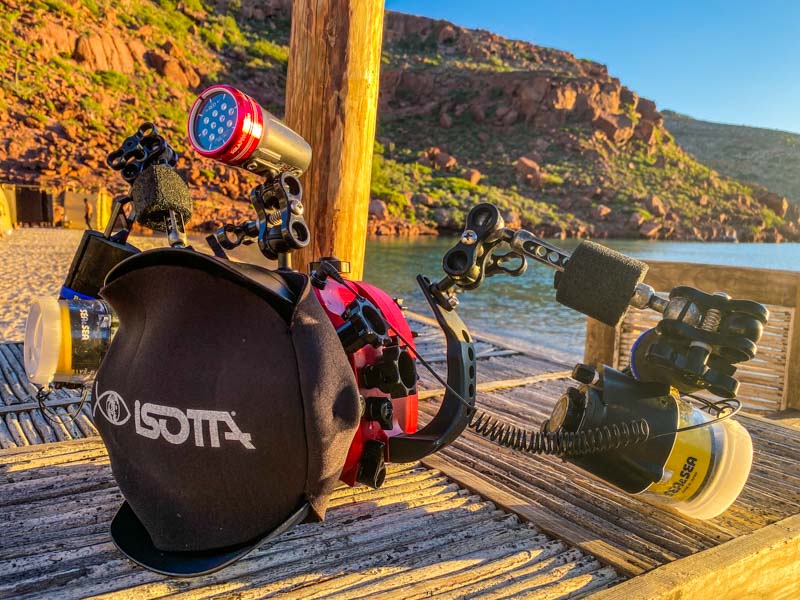
In La Paz, we found the Nikon Z6 to perform just as well as the A7R IV underwater. However, there are some important differences. The autofocus tracking ability is not quite as accurate as the A7R IV, though the autofocus with the Z6 was quicker in some circumstances – especially in low light. The Nikon Z6 has significantly less resolution at 24.5 MP, but the Nikon Z7 is in a similar class as the Sony A7R IV at 45.7 MP. In some circumstances the Nikon Z6 would have less noise at lower ISO’s than the A7R IV due to the lower resolution.
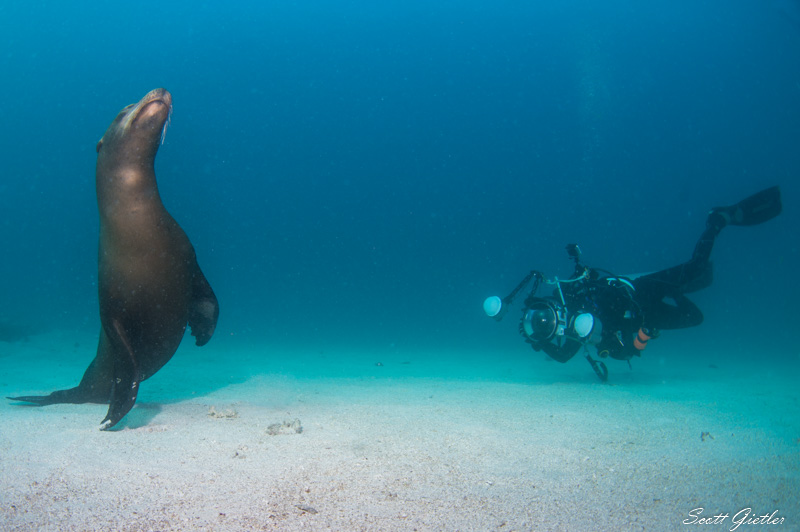
A sea lion playing with one of our guests. Photographed with the Nikon Z6, Nikon 8-15mm fisheye lens, Isotta Z6/Z7 underwater housing, dual Sea & Sea YS-D2J strobes. 1/250, f/8, ISO 200
One of the biggest highlights of Nikon Z6 is the selection of excellent F-mount lenses that work seamlessly with the Z6 and the FTZ adapter – and we can’t wait to see some underwater Z mount lenses coming soon! We loved shooting the sea lions with the Nikon 8-15mm circular fisheye lens. We also found the Nikon 105mm macro to be a great lens for shooting blennies and colorful patterns on Baja Reefs. The autofocus on the 105mm macro lens is quick and snappy.
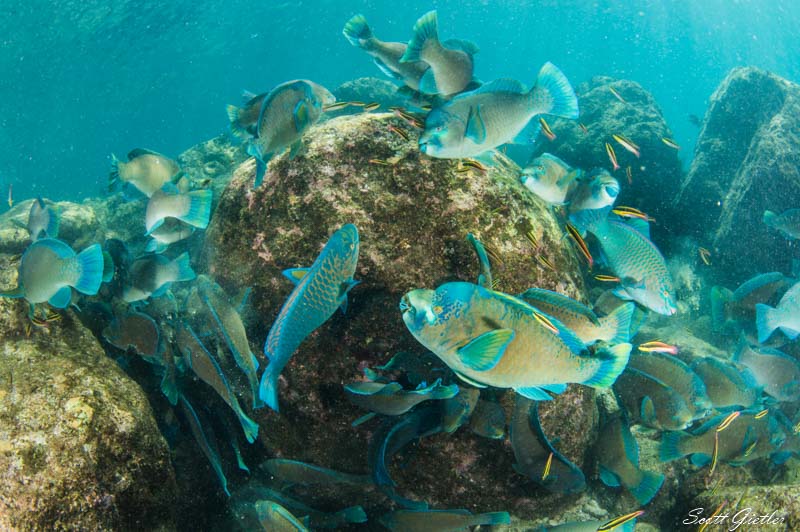
A school of parrotfish feeding at Los Islotes, Mexico. Photographed with the Nikon Z6, Nikon 8-15mm fisheye lens, Isotta Z6/Z7 underwater housing, dual Sea & Sea YS-D2J strobes. 1/250, f/10, ISO 200
The Isotta housing for the Nikon Z6 and Z7 is one of our favorites on the market! It’s extremely lightweight and compact for an aluminum housing and all the controls are seamless and ergonomic. It was so compact that we could actually tell we were shooting with a full-frame mirrorless camera that is slightly smaller than the DSLR counterpart. In fact, I spent most of my time shooting with one hand! The built in TTL flash trigger works quite well, and I found it to be just as fast and accurate as using sync cords. It only missed exposure a couple times with particularly quick sea lions. The trim and buoyancy with this set up is beautiful – you almost forget you’re diving with a professional system because it’s so light. The red color of the housing is a very nice touch, and we really loved how easy it was to open up the housing and remove the camera. Because of the large port opening on the front, we could remove the camera and lens from the housing at the same time – even with the FTZ adapter. This is something you can’t always do with other brands.
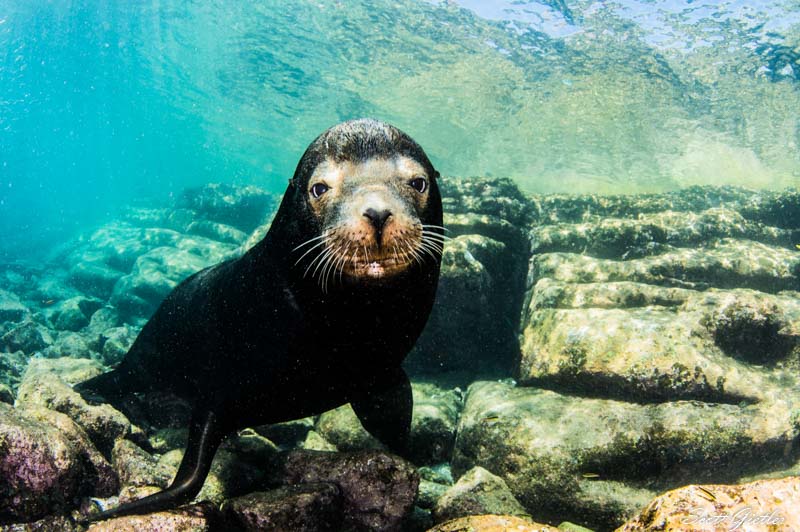
A sea lion at Los Islotes, La Paz, Mexico photographed with the Nikon Z6, Nikon 8-15mm fisheye lens, Isotta Z6/Z7 underwater housing, dual Sea & Sea YS-D2J strobes. 1/250, f/8, ISO 200
The Guests and the Crew
We would like to send a special shout out to the guests on our La Paz trip. We couldn’t have hoped for a kinder and more enthusiastic group! Everyone was very willing to listen, learn, and improve their photography. And we saw the results! It’s always great to be among a group of people where you can share your love for an artform and they share it right back.
And finally, the crew – we spent the week diving with Fun Baja, a top-notch operation with intelligent and dedicated dive guides. They worked extremely hard every day to make sure our experience was seamless. Everyone on the crew was extremely kind, driven, and great at what they do.
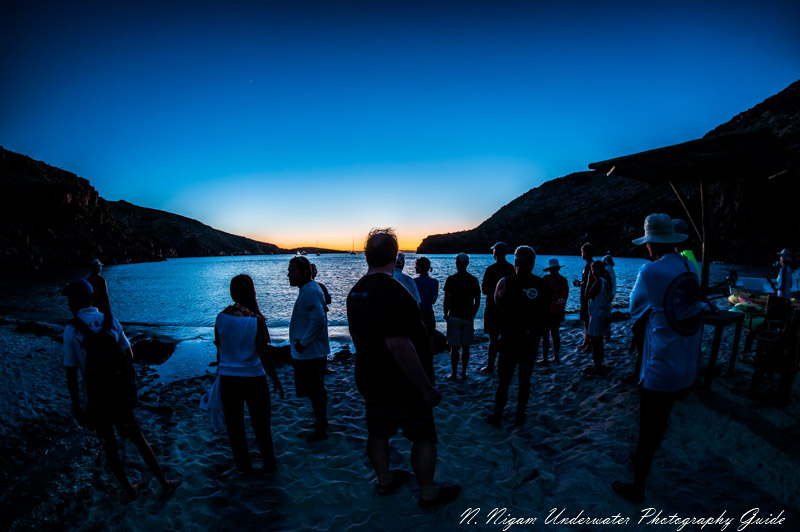
The group watching sunset

